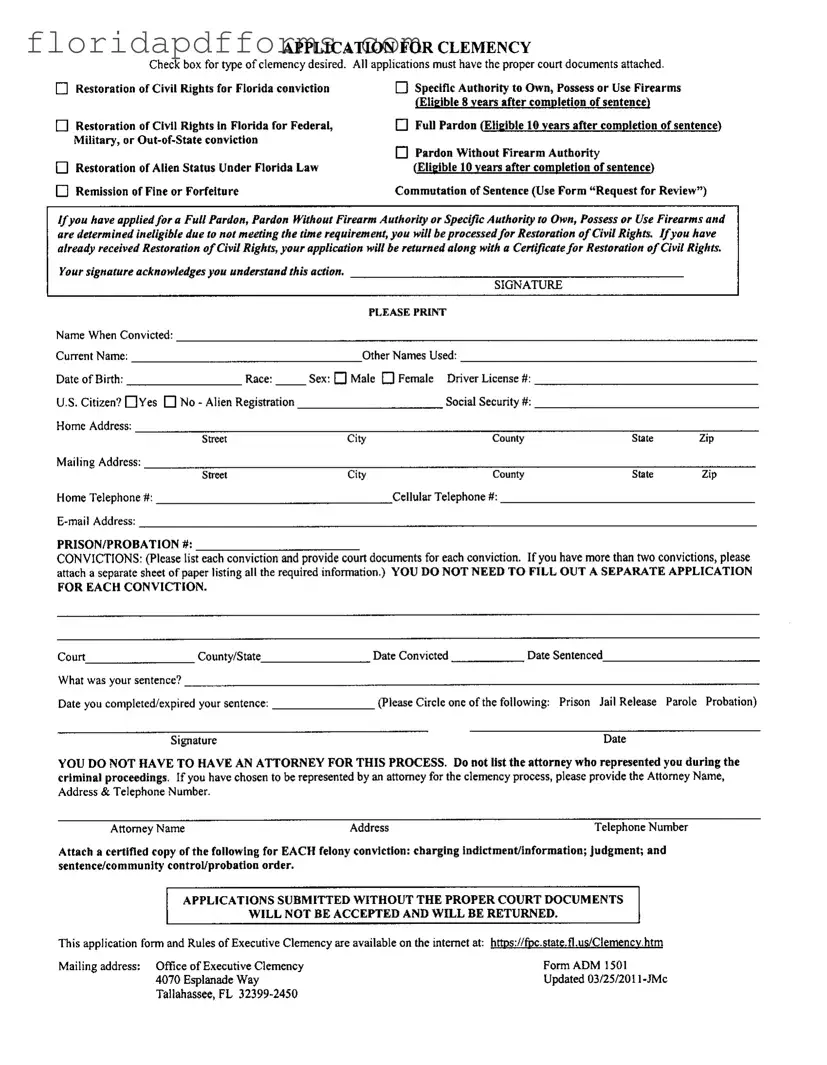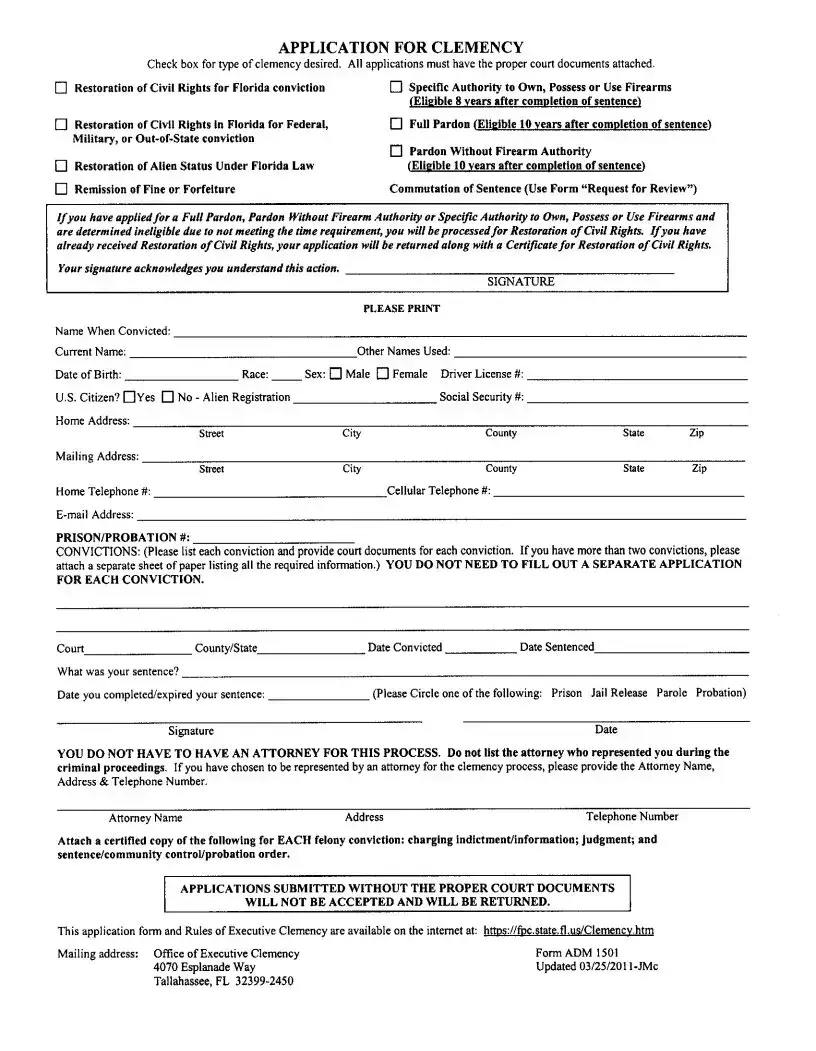The Florida Clemency Application form shares similarities with the Parole Application form, which is used by individuals seeking early release from incarceration. Both documents require applicants to provide personal information, including details about their convictions and the completion of their sentences. Just as the clemency application necessitates the attachment of court documents, the Parole Application also demands evidence of rehabilitation and compliance with parole conditions. This ensures that the reviewing authorities have a comprehensive understanding of the applicant's history and current status.
Another document that aligns closely with the Florida Clemency Application is the Certificate of Restoration of Rights form. This document is issued to individuals who have successfully regained their civil rights after a felony conviction. Similar to the clemency application, it requires verification of the applicant’s eligibility and completion of the necessary waiting period. Both forms emphasize the importance of documenting prior convictions and the restoration process, ensuring that individuals understand their rights and responsibilities following a conviction.
The Application for Expungement of Criminal Records bears resemblance to the Florida Clemency Application as well. This form is utilized by individuals seeking to have their criminal records sealed or expunged. Like the clemency application, it requires detailed personal information and documentation of prior convictions. Both processes aim to provide individuals with a second chance, though they address different aspects of criminal justice and rehabilitation.
Similarly, the Application for a Full Pardon is another document that parallels the Florida Clemency Application. This application specifically requests forgiveness for a past crime, allowing individuals to restore their civil rights. Both applications necessitate a waiting period after the completion of the sentence, along with the submission of court documents that substantiate the applicant’s claims. The emphasis on timeframes and documentation in both forms highlights the structured approach taken by the state in evaluating requests for clemency or pardon.
The Request for Commutation of Sentence form is also akin to the Florida Clemency Application. This document is used when an individual seeks a reduction in their sentence. Just as the clemency application outlines the type of clemency desired, the commutation request requires applicants to specify the relief sought. Both forms require a thorough review of the applicant’s criminal history and the circumstances surrounding their conviction, ensuring that the decision-makers have all pertinent information at hand.
The Application for Restoration of Voting Rights is another document that shares similarities with the Florida Clemency Application. This form is specifically designed for individuals who wish to regain their right to vote after a felony conviction. Both applications involve a process of review and eligibility assessment, and they require applicants to provide evidence of their rehabilitation and completion of sentences. The restoration of voting rights is a crucial aspect of reintegration into society, much like the clemency process itself.
The Application for Military Discharge Upgrade also has elements in common with the Florida Clemency Application. This form is utilized by veterans seeking to change their discharge status, which can affect their civil rights and benefits. Both applications require the submission of supporting documentation and provide a structured process for review. The focus on rehabilitation and acknowledgment of past mistakes links these two processes, reflecting a broader commitment to second chances.
Lastly, the Application for a Certificate of Good Conduct is similar to the Florida Clemency Application. This document is sought by individuals who wish to demonstrate their rehabilitation and secure employment or housing opportunities. Both forms require an assessment of the applicant’s criminal history and completion of their sentence, reinforcing the importance of accountability and the potential for positive change. Each application serves as a pathway to reintegration, allowing individuals to move forward with their lives after a conviction.

